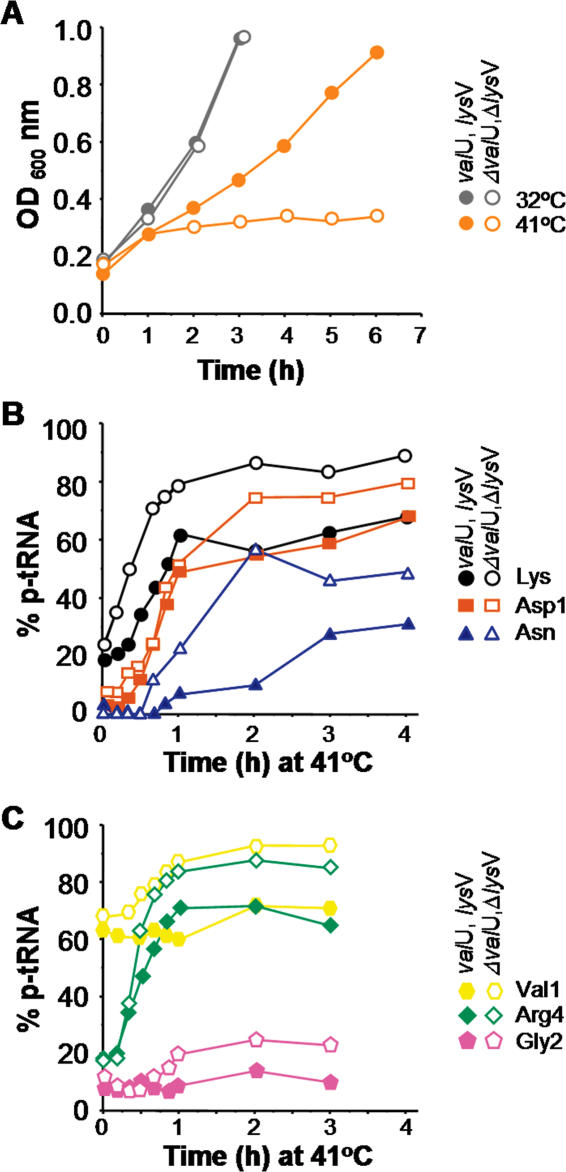Figure 2.
Suppression of the Pth(Ts) phenotype mediated by the overproduction of tRNALys promotes growth and reduces only moderately the concentration of p-tRNAs at 41°C. (A) Presents the growth in liquid medium of the pth(Ts) mutant strain AA7852 separately transformed with pVH124 (ΔvalU, ΔlysV; open symbols) or pVH119 (valU, lysV; closed symbols) at 32 and 41°C. Cells were grown at 32°C to an OD600 of 0.2 and further incubated at 32°C (grey symbols) or transferred to 41°C at time = 0 min (orange symbols). (B and C) show the percentages of p-tRNAs accumulated during growth at 41°C as described in (A). The relative fractions of the various p-tRNAs [p-tRNALys (closed circles), p-tRNAAsp1 (dark orange squares), p-tRNAAsn (blue triangles), p-tRNAArg4 (green diamonds), p-tRNAGly2 (pink pentagons) and p-tRNAVal1 (yellow hexagons)] were quantified by northern blotting of acid urea gels. The curves show representative experiments. Note: half of the material extracted from the cells that banded as aminoacyl- or p-tRNAVal1 (yellow hexagons) in the acid urea gels was refractory to treatments with purified Pth protein or with CuSO4 (data not shown) and may correspond to a partially modified variant of tRNAVal1 (10). Therefore, the actual concentration of p-tRNAVal1 represented 30% of total tRNAVal1 at the non-permissive temperature.

